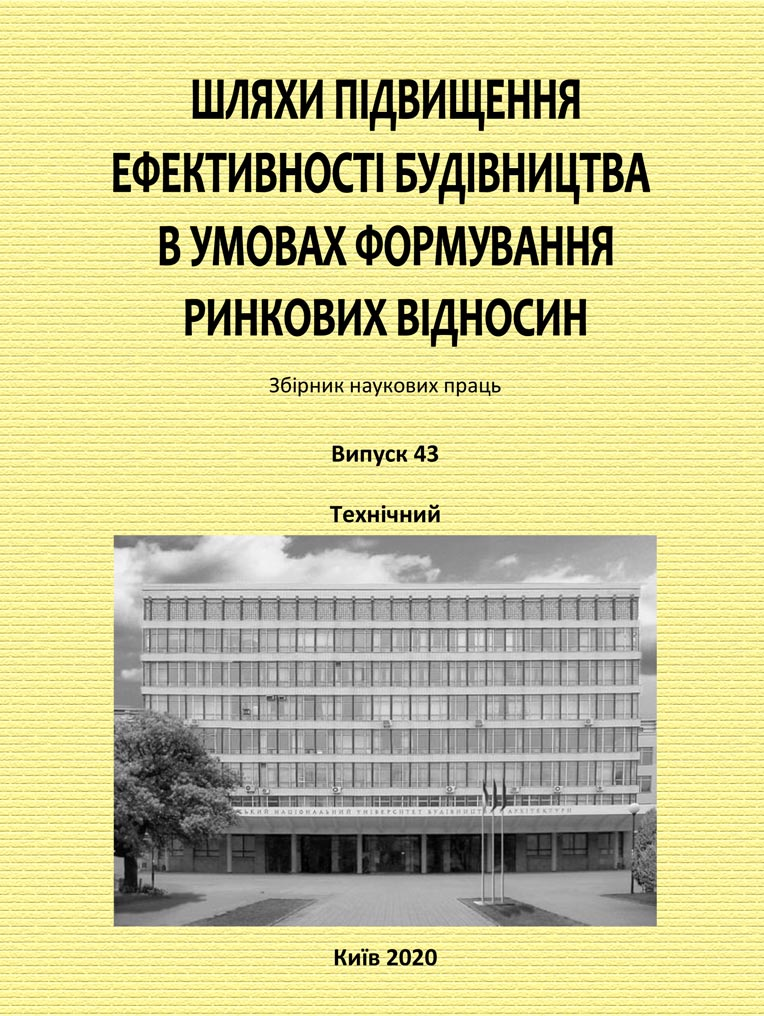Energy management of construction companies on the principles of "Green Economy"
DOI:
https://doi.org/10.32347/2707-501x.2019.42.100-105Keywords:
green economy, renewable energy, sustainable development, energy efficiencyAbstract
The article reveals the essence of the "green" economy. The well-known features and principles of the green economy, its multiplicative and anti-crisis potential, are highlighted. An understanding of the essence and a description of the goals of "green" technologies is offered, which involves dealing not with the consequences but with the causes of environmental problems.
It was identified that among the most important activities for increasing the total benefits for the economy, ecology and employment are the improvement of energy efficiency of buildings and individual structures, construction products and materials, the introduction of renewable energy sources, stable energy efficient transport, agriculture and rational use of water resources. These sectors of the economy can deliver rapid results already in the medium term. The list of market instruments for ensuring the transition of construction to the principles of "green economy" is analyzed, namely :. public and private investments in green production, exchange of eco-technologies, implementation of public procurement policy that stimulates the production of green products, systematic targeted state support for research and development related to the creation of clean technologies, fiscal reforms, introduction of subsidies for environmental protection production and cancellation of subsidies for resource-intensive production, removal of trade barriers for environmental goods and services.
The instruments of greening the economy are considered - subsidies, preferential tax rates, grants, adequate control over "green" construction enterprises, reduction of income tax; to give preference to “green products” when conducting public procurement; to facilitate the opening of green production and to simplify the commissioning of enterprises using green production. It is determined that an effective system of environmental taxation, the availability of market financial mechanisms in the field of financing environmental activities are the main components of the "green economy".
References
1. Bousquet, F. & Fayard, A. “Road infrastructure concession practice in Europe. No 2675, Policy Research Working Paper Series from The World Bank”. [Elektronnij resurs]. – Rezhim dostupu:http://econpapers.repec.org/paper/wbkwbrwps/2675.htm
Burkinskij, B.V. Galushkina, T.P. & Reutov, V.Ye. (2011) Zelena” ekonomika kriz prizmu transformacijnih zrushen v Ukrayini: Monografiya. – Odesa: IPREED NAN Ukrayini; Saki: PP “Pidpriyemstvo Feniks”.
Varnavskij, V. G. (2005) Partnerstvo gosudarstva i chastnogo sektora: formy, proekty, riski / Institut mirovoj ekonomiki i mezhdunarodnyh otnoshenij: Nauka.
4. Dejneka, A. (2011) «Zelena ekonomika» – perspektivnij shlyah rozvitku girskih rajoniv URL – Rezhim dostupu: http://zik.ua/ua/analytics/2011/12/20/325061
Dopovid Ukrayini do Konferenciyi OON zi stalogo (zbalansovanogo) rozvitku Rio+20 (proekt) /Za red. L.G. Rudenka (2012) Kiyiv: Institut geografiyi NAN Ukrayini.
Musina, L.A. (2012) Regionalni innovacijni strategiyi v sistemi upravlinnya stalim rozvitkom // Materiali kruglogo stolu “Regionalna innovacijna strategiya ta stalij ekonomichnij rozvitok”.- Derzhinformnauki Ukrayini, NTU "KPI". – 70-75.
Problemi formuvannya strategiyi rozvitku turistichnih regioniv: monografiya / Vidp. red.– Lviv =: IRD NAN Ukrayini, 2006.
Galushkina, V.Ye. Reutov, L.M. & Kacharovska T.P. (2009) Strategichni vektori regionalnih transformacijnih zrushen: monografiya. Simferopol: Pidpriyemstvo Fyeniks.
Enerhoefektyvnist v munitsypalnomu sektori. /A.Maksymov, I.Vakhovych ta in.// Asotsiatsiia mist Ukrainy – K., 2015
10. Bielienkova, O.Iu., Tsyfra, T.Iu., Matsapura, O.V. & Ostapenko I.O. (2018) Ekonomichna otsinka zakhodiv z pidvyshchennia enerhoefektyvnosti. Shliakhy pidvyshchennia efektyvnosti budivnytstva v umovakh rynkovykh vidnosyn, 36, 78-82.
Downloads
How to Cite
Issue
Section
License
Copyright (c) 2020 N. M. Hlibovets

This work is licensed under a Creative Commons Attribution 4.0 International License.
Authors who publish with this journal agree to the following terms:
- Authors retain copyright and grant the journal right of first publication with the work simultaneously licensed under a Creative Commons Attribution License that allows others to share the work with an acknowledgement of the work's authorship and initial publication in this journal.
- Authors are able to enter into separate, additional contractual arrangements for the non-exclusive distribution of the journal's published version of the work (e.g., post it to an institutional repository or publish it in a book), with an acknowledgement of its initial publication in this journal.
- Authors are permitted and encouraged to post their work online (e.g., in institutional repositories or on their website) prior to and during the submission process, as it can lead to productive exchanges, as well as earlier and greater citation of published work (See The Effect of Open Access).

